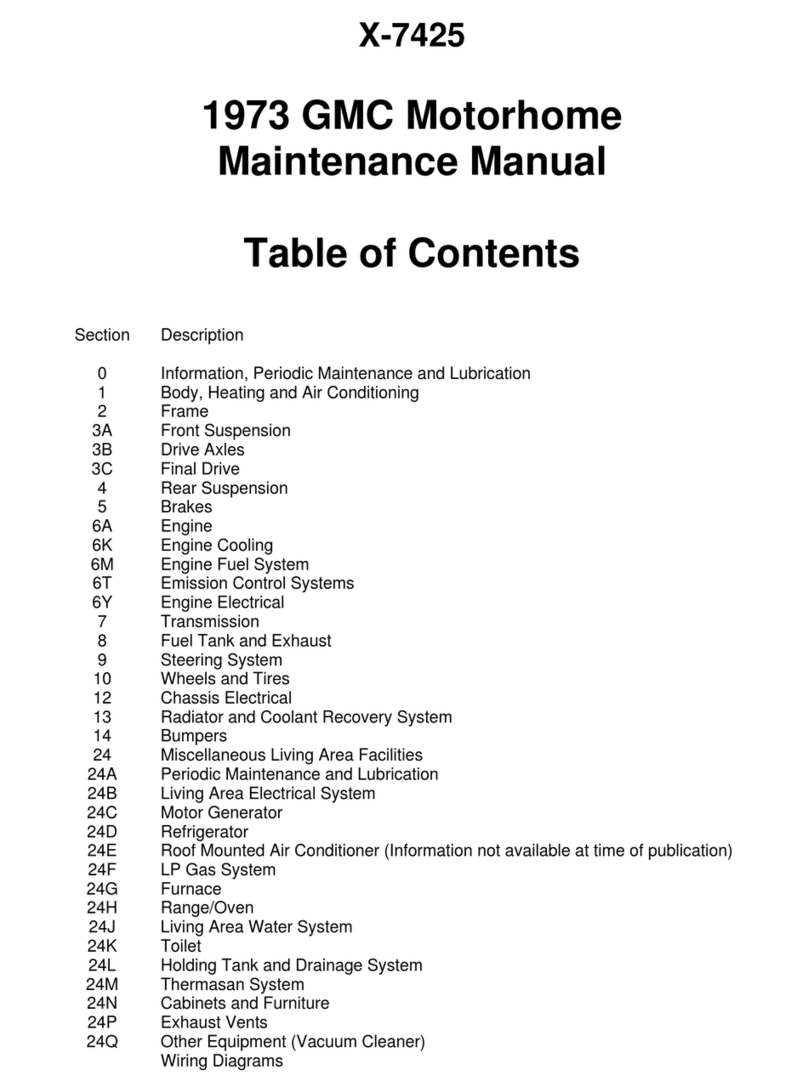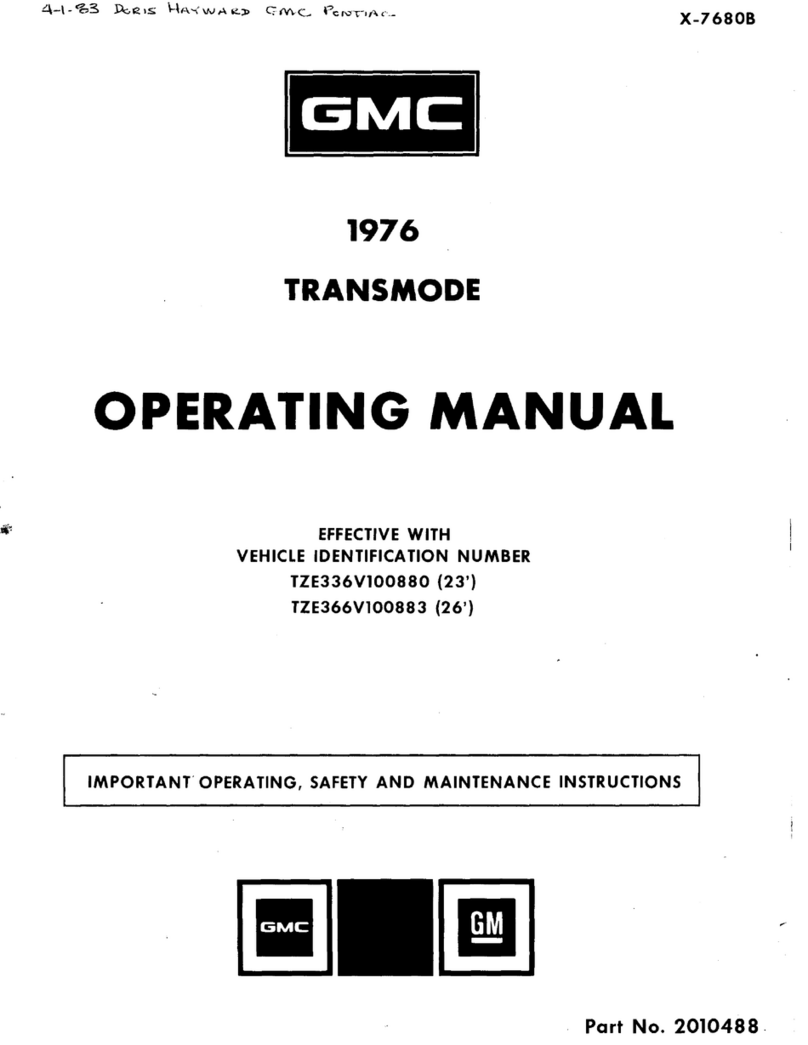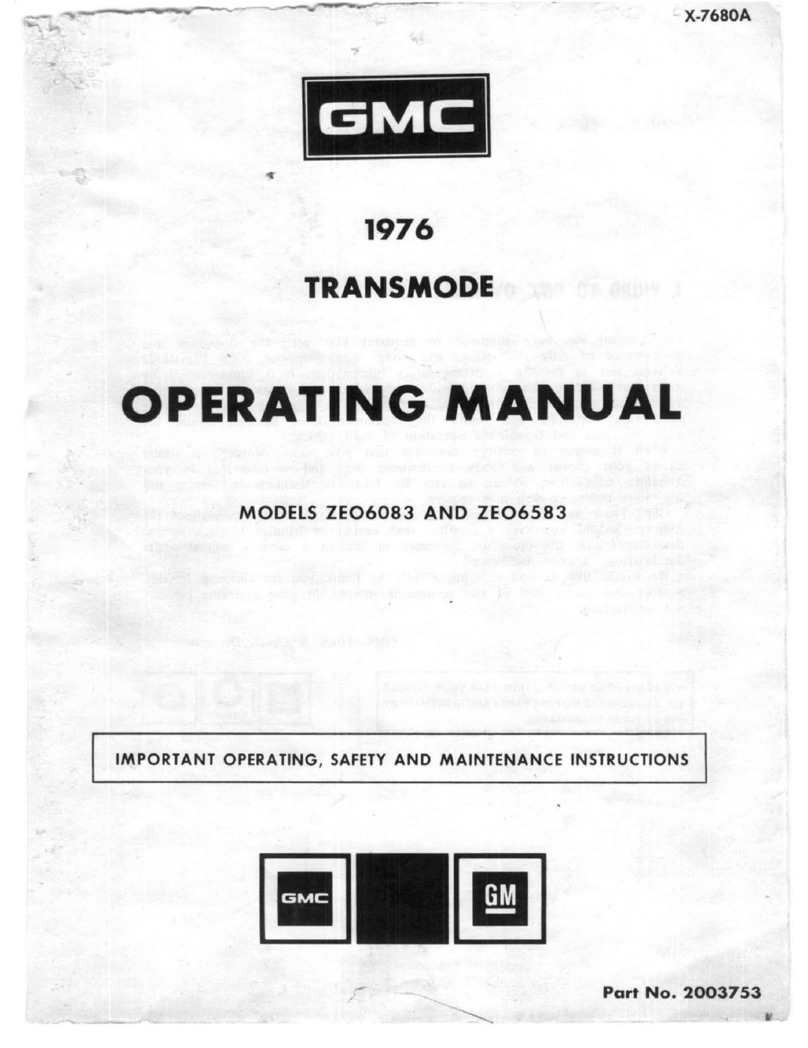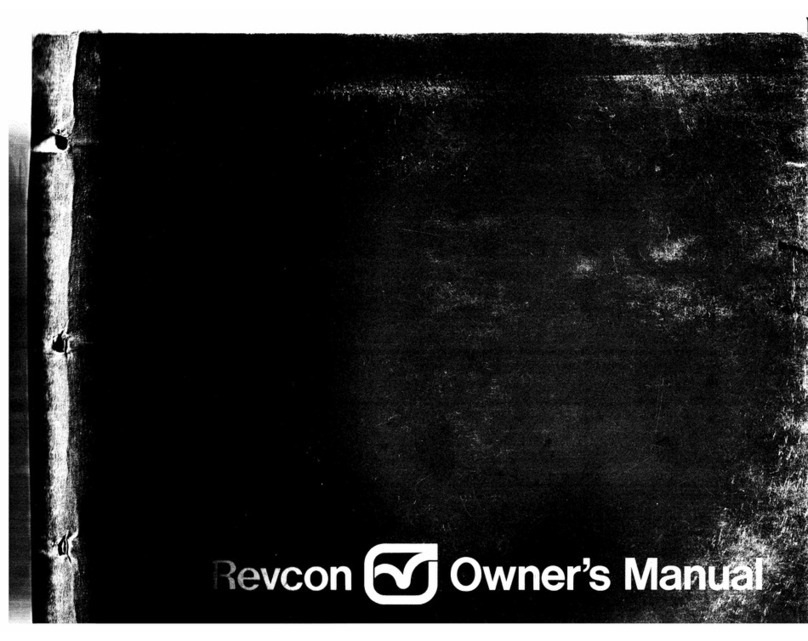INTRODUCTIO
N
GENERA
L
Your selection of a Jimmy motor home indicate
s
that you are a discriminating consumer who appre-
ciates quality and performance, combined wit
h
styling
; a person who normally does not indulge i
n
impulse buying. However, now that you've purchase
d
your new Jimmy, it's our experience that you ma
y
become impulsive about starting on your first trip
.
We urge that you do not make a hasty departure
.
It is true that your Jimmy motor home is ready
.
The body and chassis were designed and constructe
d
by GMC; the interior was designed by Jimmy Moto
r
Homes and upfitted with the finest materials an
d
components, and the systems have been thoroughl
y
checked by Jimmy and again by your GMC deale
r
prior to delivery to you
. But for complete enjoymen
t
and trouble-free traveling, it is important that yo
u
get to know your motor home, its appliances an
d
accessories, how they work and how to take car
e
of them
. Make careful plans about what to tak
e
and how much
. Later, when you are familiar wit
h
your motor home and your own travel needs an
d
preferences, those "spur of the moment" trip
s
can be fun
.
To help you get started, we have included mor
e
than operating and maintenance instructions i
n
this manual
; you'll also find tips and suggestion
s
especially aimed at first-time RV'ers
. There also ar
e
dozens of illustrations for easy identification of th
e
various components
.
NOTE
: illustrations identified by a Figur
e
Number will be found in the convenient foldou
t
at the back of the manual
.
Our first suggestion is that after you've rea
d
this manual, the Chassis and Body Operating Manual
,
and the appliance and accessory instruction booklets
,
store them in your motor home for handy reference
.
An overnight or weekend "shakedown" trip ca
n
help RV'ing novices become familiar with thei
r
unit and its systems and appliances
. The experienc
e
gained and the hints other RV'ers are usually eage
r
to share will help make future trips more enjoyable
.
Although you selected certain standard and/o
r
optional equipment, you may wish to add othe
r
accessories later
. Experience is invaluable in deter
-
mining which, if any, additional items to choose
.
Remember, your GMC motor home dealer will assis
t
you in every way possible
.
LICENSE
S
The vehicle licensing laws vary from state-to-state
.
Check with your license bureau or nearest branc
h
office for the requirements in your state
. Be sur
e
to renew your driver's license if it has or will expir
e
during your trip
.
INSURANC
E
Personal liability, property damage, collisio
n
and theft of contents may be features of your auto
-
mobile policy which apply to your Jimmy unit
.
Contact your insurance agent about details of you
r
coverage
. Always carry your policy card
.
TRAVEL PREPARATION
S
GENERA
L
Determine the various items of equipment
,
clothing, food and other supplies required for th
e
length and destination of your journey
. In a sub-
sequent section, the importance of proper loadin
g
is explained, but at this stage you're more concerne
d
with a quick getaway
. One way to reduce loadin
g
time is to purchase dinnerware and silverware, pots
,
pans, towels and bedding, which can remain in you
r
unit at all times
. After a trip, clean and launde
r
the articles and replace them in your motor home
,
ready for your next trip
. The following is a guid
e
to help in your travel preparation
.
CLOTHIN
G
Compile a clothing list for each person
. Conside
r
the season and areas through which you intend t
o
travel
. Basic articles: Underwear, socks, footwear
,
shirts, blouses, trousers, slacks, dresses, shorts
,
sweaters, jackets or coats, rainwear and swim suits
.
CAMP HYGIEN
E
Dishsoap, dishcloths and dishtowels, garbage an
d
trash bags, mop, broom and dustpan
.
PERSONAL HYGIEN
E
Toilet paper, soap, washcloths, towels, tooth
-
paste, toothbrush, deodorant, and shaving
kit
.
SAFET
Y
Flares and reflectors
; flashlight
; first aid
kit
;
tow rope and/or chain
.
FOOD
AND
WATE
R
Don't try to take a food supply for an extende
d
trip
. Take enough for two or three days and replenis
h
supplies along the
way
.
Take a basic supply o
f
seasonings
: Sugar, salt, pepper and spices
. Pla
n
meals so that fresh or refrigerated items are use
d
before they spoil
. Fill your fresh water tank befor
e
leaving (when traveling in winter, it is recommende
d
that the water tank not be filled until the interio
r
of your unit is thoroughly warmed or until
yo
u
reach your destination)
.
MEAL PREPARATIO
N
Bottle cap and can opener
; matches, lighter o
r
igniter device
; pots, pans, plates, glasses, and cup
s
(paper or plastic are lighter and less likely to brea
k
while the vehicle is in motion)
; silverware and carvin
g
knife
.
2









































